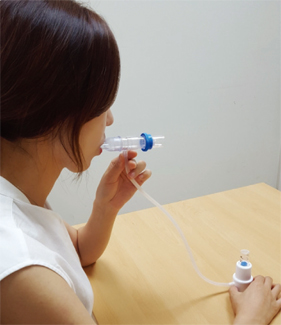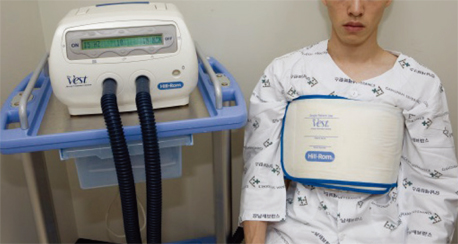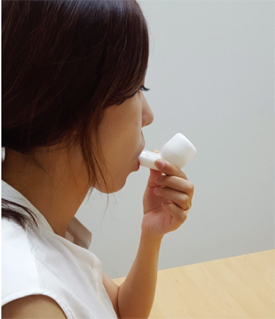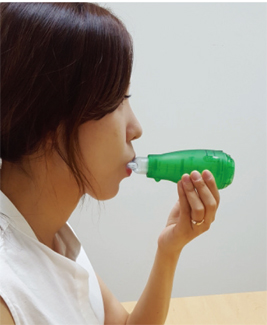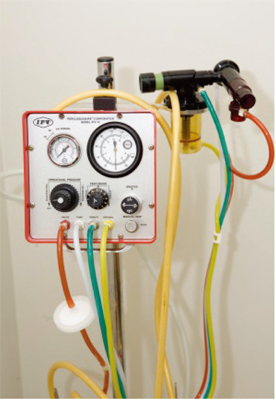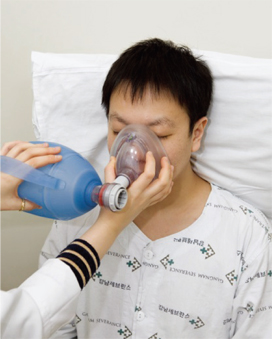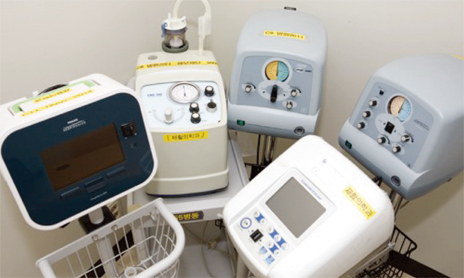J Korean Med Assoc.
2016 Sep;59(9):705-712. 10.5124/jkma.2016.59.9.705.
Pulmonary rehabilitation
- Affiliations
-
- 1Department of Rehabilitation Medicine, Gangnam Severance Hospital, Yonsei University College of Medicine, Seoul, Korea. kswoong@yuhs.ac
- 2Rehabilitation Institute of Neuromuscular Disease, Gangnam Severance Hospital, Yonsei University College of Medicine, Seoul, Korea.
- 3Pulmonary Rehabilitation Center, Gangnam Severance Hospital, Yonsei University College of Medicine, Seoul, Korea.
- KMID: 2391987
- DOI: http://doi.org/10.5124/jkma.2016.59.9.705
Abstract
- Pulmonary rehabilitation consists of breathing retraining, respiratory muscle rest, airway secretion elimination, reconditioning exercise, psychosocial support, nutritional support, adequate ventilator support, and patient education. It is usually performed by using the appropriate inspiratory/expiratory muscle aids to alleviate and control the symptoms of respiratory diseases and to prevent respiratory complications. It is important to understand the principles of each technique and apply them properly in delivering pulmonary rehabilitation.
MeSH Terms
Figure
Reference
-
1. Pardy RL, Reid WD, Belman MJ. Respiratory muscle training. Clin Chest Med. 1988; 9:287–296.
Article2. Kang SW, Na YM, Baek SK, Kim YW, Choi EH, Moon JH. Clinical implications of inspiratory muscle training in patients with duchenne muscular dystrophy. J Korean Acad Rehabil Med. 1998; 22:361–368.3. AARC (American Association for Respiratory Care) clinical practice guideline: postural drainage therapy. Respir Care. 1991; 36:1418–1426.4. Scanlan CL, Myslinski MJ. Bronchial hygiene therapy. In : Scanlan CL, Wilkins RL, Stoller JK, editors. Egan's fundamentals of respiratory care. St. Louis: Mosby;1999. p. 791–816.
Article5. Kluft J, Beker L, Castagnino M, Gaiser J, Chaney H, Fink RJ. A comparison of bronchial drainage treatments in cystic fibrosis. Pediatr Pulmonol. 1996; 22:271–274.
Article6. Chatburn RL. High-frequency assisted airway clearance. Respir Care. 2007; 52:1224–1235.7. Schibler A, Casaulta C, Kraemer R. Rationale of oscillatory breathing as chest physiotherapy performed by the flutter in patients with cystic fibrosis. Paediatr Pulmonol. 1992; 14:suppl 8. 301.8. Bach JR, Ishikawa Y, Kim H. Prevention of pulmonary morbidity for patients with Duchenne muscular dystrophy. Chest. 1997; 112:1024–1028.
Article9. Hass A, Pineda H, Hass F, Axen K. Pulmonary therapy and rehabilitation: principles and practice. Baltimore: Williams & Wilkins;1979.10. Khan AU. Effectiveness of biofeedback and counter-conditioning in the treatment of bronchial asthma. J Psychosom Res. 1977; 21:97–104.
Article11. Bach JR, Kang SW. Disorders of ventilation: weakness, stiffness, and mobilization. Chest. 2000; 117:301–303.12. Kang SW, Bach JR. Maximum insufflation capacity. Chest. 2000; 118:61–65.
Article13. Kang SW, Bach JR. Maximum insufflation capacity: vital capacity and cough flows in neuromuscular disease. Am J Phys Med Rehabil. 2000; 79:222–227.14. Bach JR. Mechanical insufflation-exsufflation: comparison of peak expiratory flows with manually assisted and unassisted coughing techniques. Chest. 1993; 104:1553–1562.15. Kang SW, Cho DH, Lee SC, Moon JH, Park YG, Song NK, Lee SH. Clinical implication of air stacking exercise in patients with neuromuscular diseases. J Korean Acad Rehabil Med. 2007; 31:346–350.16. Bach JR. Update and perspective on noninvasive respiratory muscle aids. Part 2: the expiratory aids. Chest. 1994; 105:1538–1544.
Article17. Kim DH, Kang SW, Choi WA. Home mechanical ventilation in South Korea. Yonsei Med J. 2014; 55:1729–1735.
Article18. Kang SW, Park JH, Ryu HH, Kang YS, Moon JH. Non-invasive mechanical ventilator care for the patients with advanced neuromuscular disease. J Korean Acad Rehabil Med. 2004; 28:71–77.19. Choi WA, Kang SW, Shin JC, Lee DY, Kim DH, Kim SD. Noninvasive respiratory management for patients with cervical spinal cord injury. J Korean Acad Rehabil Med. 2010; 34:518–523.20. Bach JR, Alba AS. Intermittent abdominal pressure ventilator in a regimen of noninvasive ventilatory support. Chest. 1991; 99:630–636.
Article21. Corrado A, Gorini M, De Paola E. Alternative techniques for managing acute neuromuscular respiratory failure. Semin Neurol. 1995; 15:84–89.
Article22. Bach JR. Update and perspectives on noninvasive respiratory muscle aids. Part 1: the inspiratory aids. Chest. 1994; 105:1230–1240.
Article23. Bach JR. Guide to the evaluation and management of neuromuscular disease. Philadelphia: Hanley & Belfus;1999.24. Bach JR, Alba AS. Management of chronic alveolar hypoventilation by nasal ventilation. Chest. 1990; 97:52–57.
Article25. Bach JR, Alba AS, Saporito LR. Intermittent positive pressure ventilation via the mouth as an alternative to tracheostomy for 257 ventilator users. Chest. 1993; 103:174–182.
Article26. Hill NS. Complications of noninvasive ventilation. Respir Care. 2000; 45:480–481.
- Full Text Links
- Actions
-
Cited
- CITED
-
- Close
- Share
- Similar articles
-
- Pulmonary Rehabilitation in Chronic Obstructive Pulmonary Disease (COPD)
- The Study on the Effects of a Respiratory Rehabilitation Program for COPD Patients
- Pulmonary Rehabilitation for Chronic Obstructive Pulmonary Disease: Highly Effective but Often Overlooked
- New therapeutic techniques and strategies in pulmonary rehabilitation
- Pulmonary Rehabilitation in COPD

